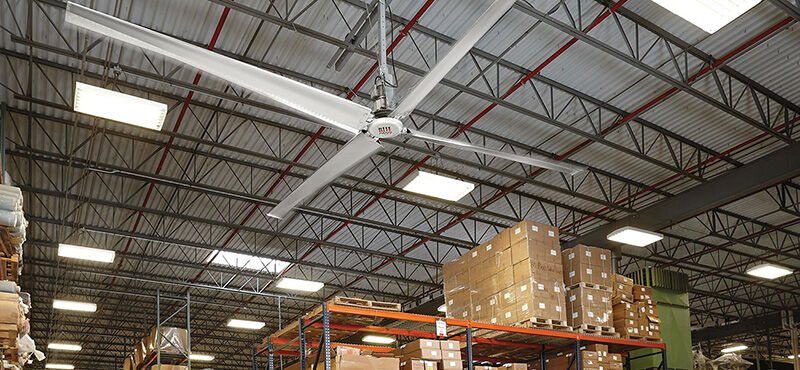Thorsten Mauritz, Marketing Manager for Rite-Hite Europe, considers some of the key future trends in Logistics – including the use of Drones– and how they impact the regulatory environment.
Industrial safety regulations are constantly evolving as new technology and new equipment is developed across the globe. Even countries that are not perhaps well known for extensive safety regulations have taken significant steps in recent times to protect employees working in potentially hazardous logistics environment.
India, for example, has made significant strides in its attitude to occupational health and safety and improving working conditions, and China has similarly introduced new regulations in reference to food safety. Much closer to home and in Europe, specific actions have also been taken across various aspects of the logistics and manufacturing supply chain, including ISO 450001 (Occupational Health & Safety), BSI BS EN 415-6 (Safety of Packaging Machines), and ISO 13857 (Safety Distances).
The point is a simple one, that regardless of industry category, it’s important for facility managers to stay abreast of not only the newest safety standards, but also to be aware of what’s coming down the regulatory pipeline. But as well as those that are already known, and perhaps already on our collective radar, will be the additional regulatory changes brought about by future trends and innovations. Take, for example, the emerging trend of Drone Deliveries.
Drone deliveries
Several major players including Amazon (with ‘Prime Air), Google and UPS have already started trialling the use of Drones to make home deliveries. In the UK, major organisations including Tesco and the Royal Mail have also announced plans to trial Drone deliveries, as has Just Eat, the food delivery service App.
Regulation in this ‘last mile’ of the supply chain is still very much in flux, due to safety concerns involving drones and manned aircraft. Whereas in the US, the Federal Aviation Administration (FAA) has limited the use of Drone for now, that’s expected to change in the future. UK regulators have also recently given the green light (April 2021) to delivery drone trials that will enable pilots to fly aircraft beyond their line of sight that could significantly shake up the logistics industry, and in other European countries including Spain they are also lifting restrictions to allow trials, for example, in the city of Madrid.
Smart PPE
The use and acceptance of Drones has no doubt been accelerated by the global Pandemic which has also impacted other areas of regulation of which we can expect more in the future. In the area of personal protective equipment (PPE), for example, there is now the increasing use of ‘Smart’ PPE devices which enable employers to monitor things such as vital signs and blood oxygen levels, as well as blood alcohol, to keep their employees safe in an industrial environment.
While such Smart devices are undoubtedly a good thing, they create significant issues in relation to the collection, use and storage of personal data – and medical data at that. This in turn creates similarly huge privacy issues in relation General Data Protection Regulation (GDPR). Further regulation, or at the very least amendments to existing regulation, will be required as a result.
The Internet of Things
Another global regulatory challenge related to data gathering and smart devices is coming about through the Internet of Things (IoT). Industrial Internet of Things (IIoT) technology is undoubtedly a positive step forward for businesses. The data gathered from multiple connected devices gives facility managers real and meaningful insight into their operation, which in turn can be used to inform ways of further improving safety and operational performance.
Champions of IIoT will be well aware, however, of the potential threat that such new technologies pose as a potential entrée for cyber criminals with malicious intent, and so it is encouraging to see new regulation already emerging in this field, not least with the launch of a new EU Cybersecurity Act which introduced a new EU-wide certification framework for ICT products, services and processes. The EU’s Digital Europe Programme from now until 2027 will see €1.9 billion invested in cybersecurity capacity and infrastructure for EU businesses, people and government.
Artificial Intelligence
Artificial Intelligence (AI) will be another area in which we can expect significant regulator change in the months ahead, again primarily related to issues around data. AI is transforming how humans and machines interact in a shared environment. The availability of data about how people work, what their emotional state is while working and how they engage with equipment and the world around them will likely lead us to a whole new level of industrial safety, but also a whole new world of industrial regulation.
The world of logistics is moving at a frenetic pace. At a practical level, be sure, therefore, to not only consult the government agencies that create safety laws, but also to reference industry guidelines, because those often influence future standards. When in doubt, if a process or application carries an element of risk, facilities should make every attempt to document and mitigate that risk as soon as possible. Employee safety is critical in every industry and all facilities.
Visit https://www.ritehite.com/en/eu for more.


